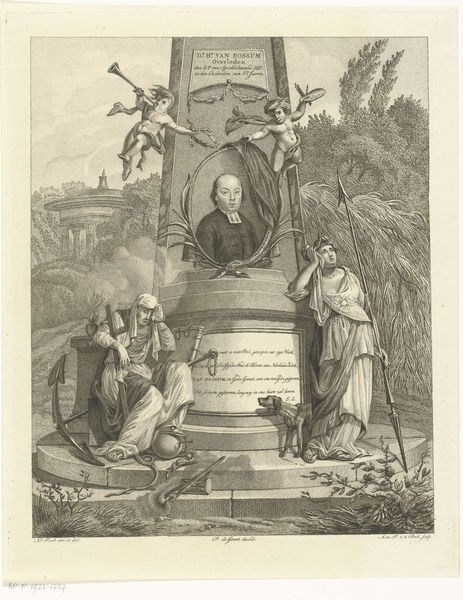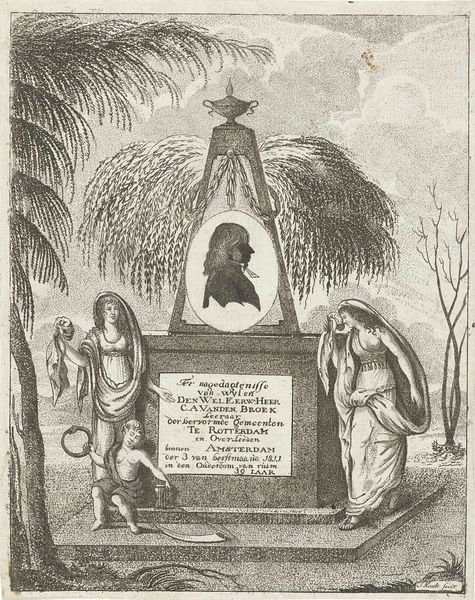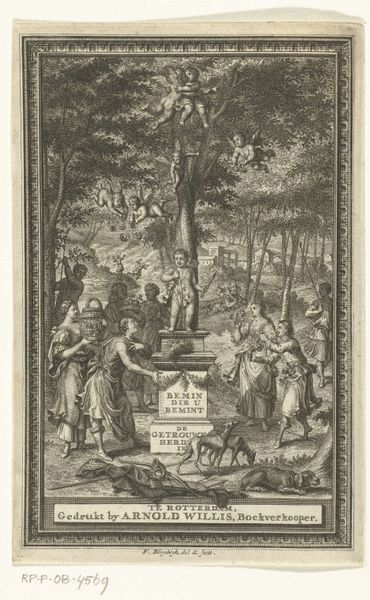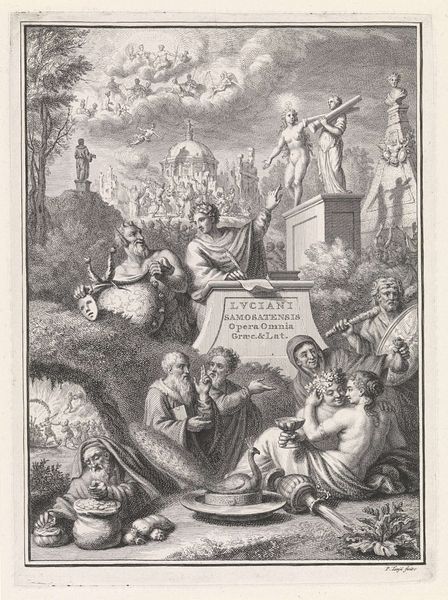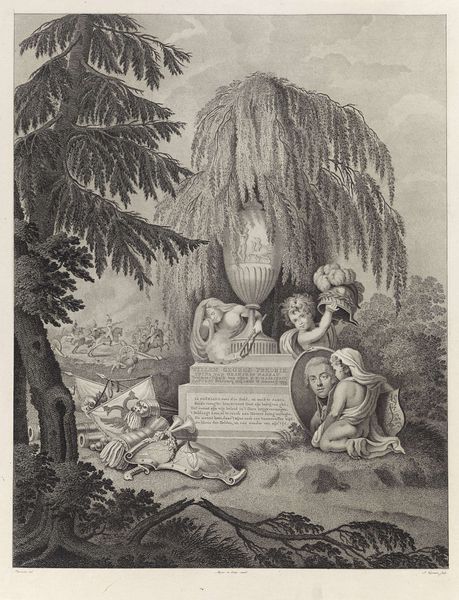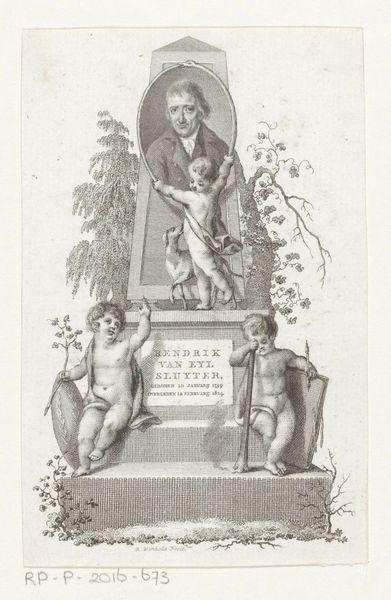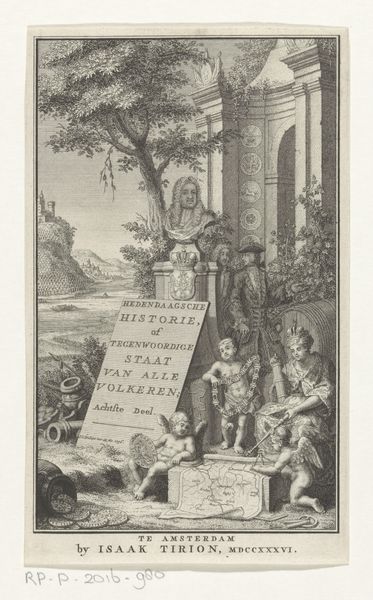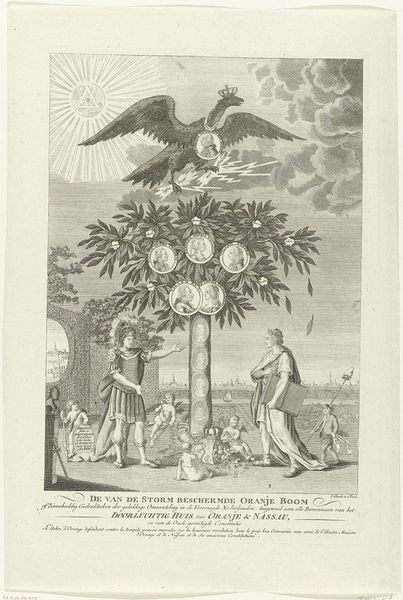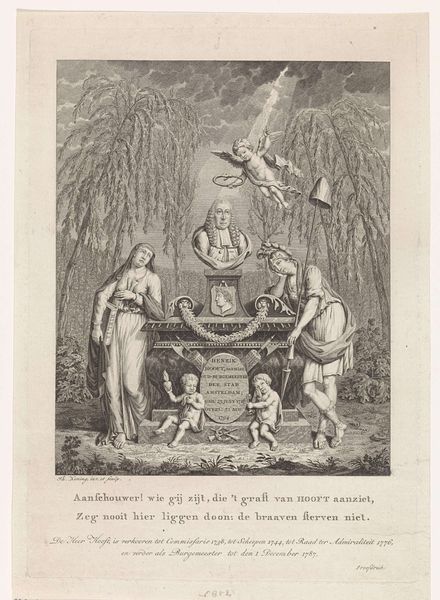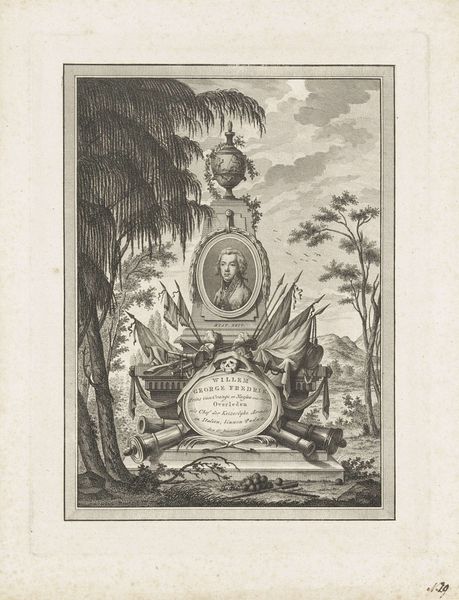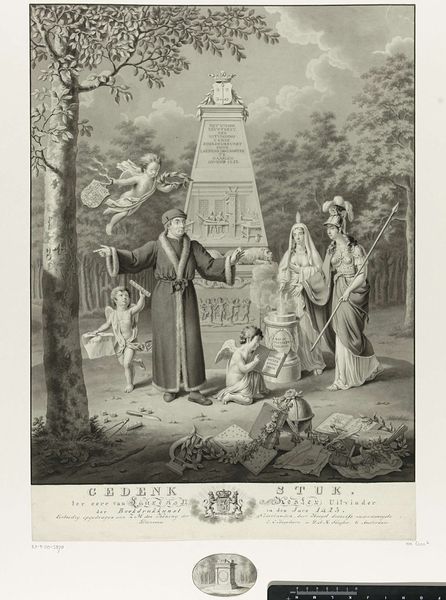
Dimensions: height 351 mm, width 264 mm
Copyright: Rijks Museum: Open Domain
Hendrik Leffert Meyling created this print, Gedenkteken voor Johannes Hamelau, sometime in the late eighteenth or early nineteenth century, using etching and engraving. It's a memorial image, full of symbols of death and transcendence, but also of worldly achievement, and invites us to consider the place of the individual within Dutch society. The monument to Hamelau at the center includes skulls, putti, and a silhouette portrait bust, all common in memorial art. But we also see symbols of learning and piety—angels, a bible, and children with slates, which speak to Hamelau's reputation. The setting is a carefully designed garden, itself a status symbol. The Latin inscription at the bottom suggests Hamelau was a reformer who moved away from Lutherism. To better understand this image, we need to research the visual codes of the period, to find out more about Dutch religious culture, and to investigate the place of portraiture within Dutch social life. What did it mean to memorialize a private citizen in this way? In whose interest was it to produce this image? These are just some of the questions a historian might ask.
Comments
No comments
Be the first to comment and join the conversation on the ultimate creative platform.
